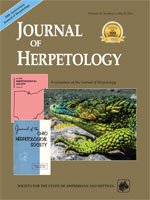Monitoring the fates of individuals after release in the wild is essential for building effective species recovery programs. Current conservation efforts for the endangered Wyoming Toad (Anaxyrus baxteri) are limited by the size and number of toads that can be individually marked using invasive tagging techniques. We evaluated the use of natural patterns of wart-like glands on the dorsum of Wyoming Toads as a potential identification technique. We photographed 194 known-identity individuals (822 total images, representing 1,554 true matching-image pairs of the same individuals) from two captive-breeding facilities in 2011 and 2012. Spot patterns provided stable markings from metamorphosis through adult life stages, and naïve observers correctly matched 100% of a subset of photo pairs “by eye.” In contrast, computer-assisted identification performed relatively poorly: the two software platforms tested (Wild-ID and Hotspotter) failed to match 47% and 64% of true matching-image pairs, respectively. The use of higher-quality cameras with faster automatic focusing speeds yielded the largest improvement in matching success of any variable tested when using identification software. Simulated capture–recapture data demonstrated that using software to identify individuals would bias abundance estimates high by up to 920%.
How to translate text using browser tools
1 March 2016
Individual Identification of the Endangered Wyoming Toad Anaxyrus baxteri and Implications for Monitoring Species Recovery
Thomas A. Morrison,
Douglas Keinath,
Wendy Estes-Zumpf,
Jonathan P Crall,
Charles V Stewart
ACCESS THE FULL ARTICLE

Journal of Herpetology
Vol. 50 • No. 1
March 2016
Vol. 50 • No. 1
March 2016




